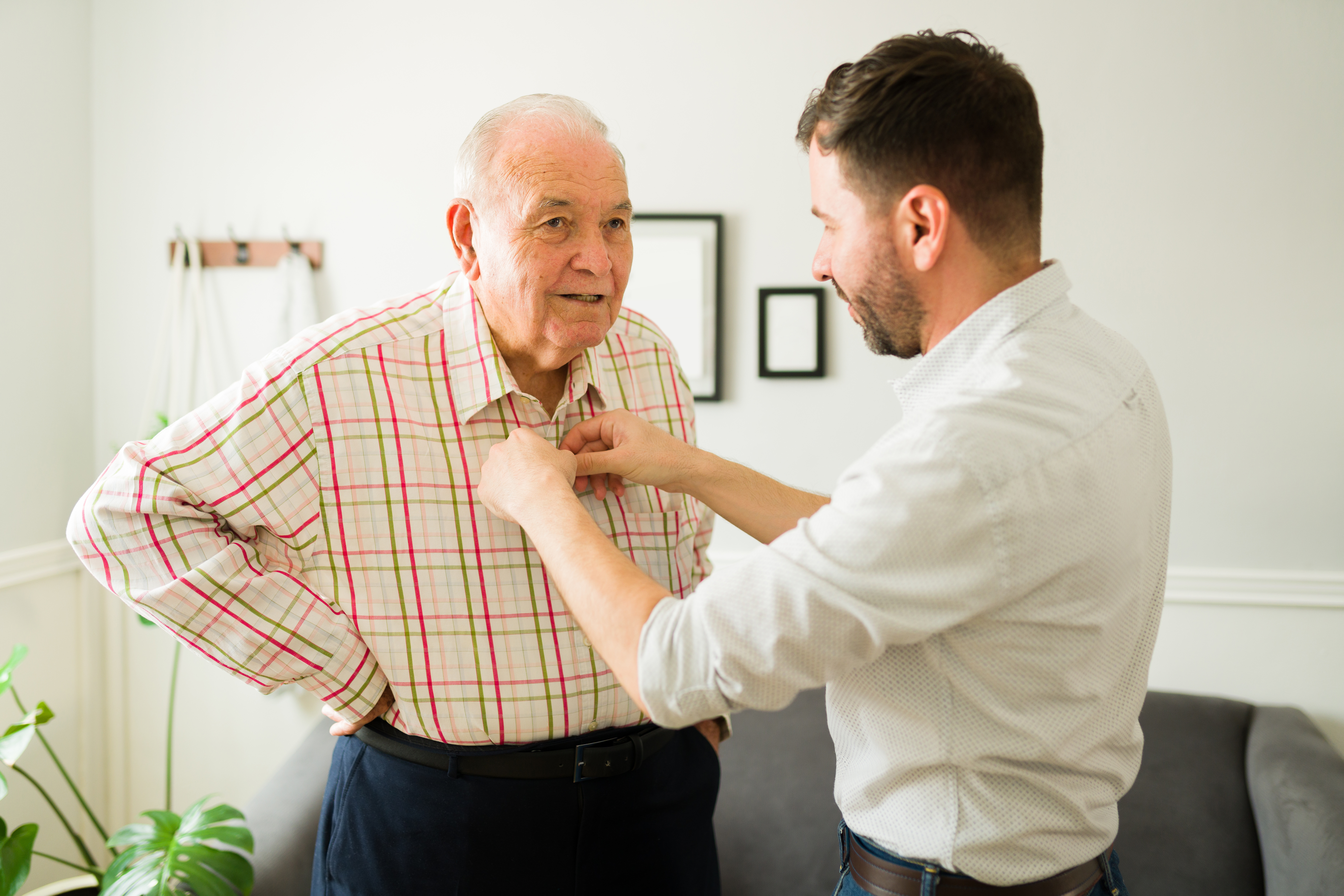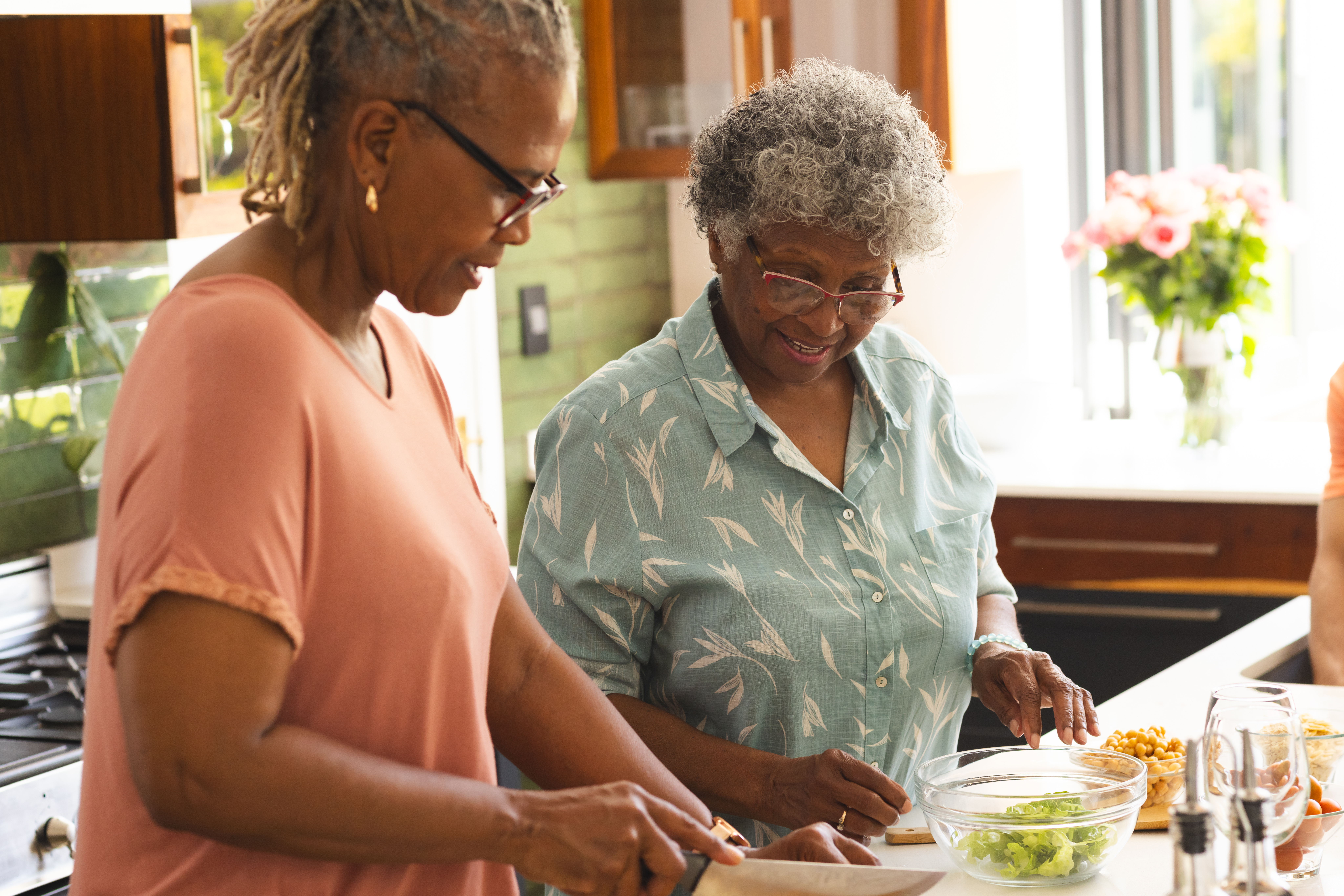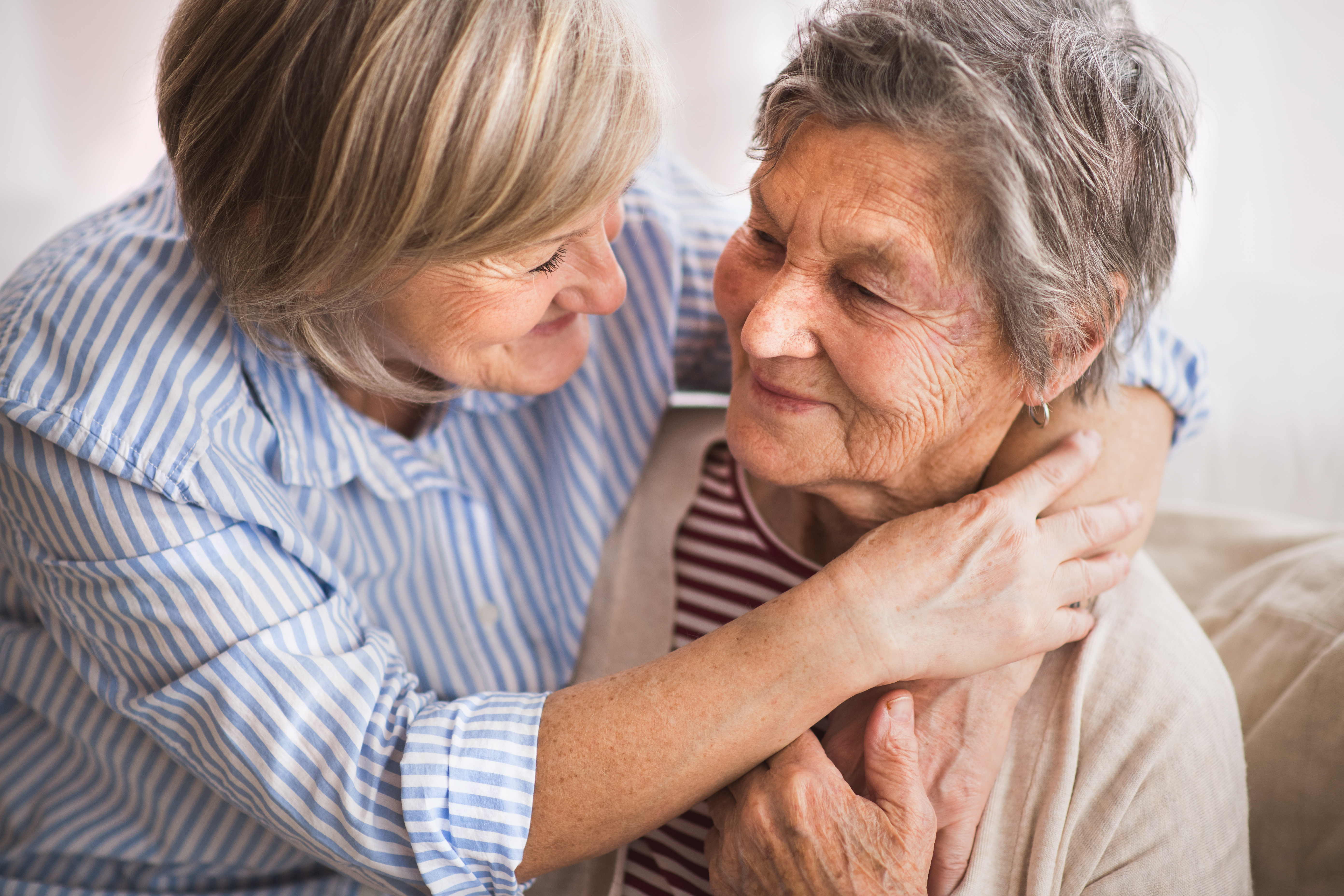How to care for someone recovering from a stroke: essential tips for caregivers

Caring for a loved one after a stroke means learning what makes them feel safe, supported, and seen. It’s about helping with daily routines while cheering on their independence and recovery. From setting up a safer home to staying on top of therapy goals, every small win matters. With patience, empathy, and the right resources, you can help a loved one recover right at home.
Caring for a loved one after a stroke is an important and meaningful responsibility. Recovering at home can offer more than just comfort; it brings the familiarity of daily routines and the chance to rebuild independence in a space that feels like their own.
Today’s aging experience is evolving, and older adults desire more choice, more dignity, and more control in how they receive stroke care. With the right knowledge and resources, you can create a safe, encouraging environment that supports your loved one’s stroke recovery journey.
When someone you love has a stroke, it can feel overwhelming to know where to begin. Every stroke recovery journey is different, and your loved one’s needs may shift along the way. But you’re not alone. This guide offers practical, compassionate tips to help you support your loved one at home. With patience, care, and the right support, you can help them move forward, one step at a time.
Understand your loved one's needs
To understand how to care for a stroke patient at home, you must first assess what your loved one needs — physically, emotionally, and socially.
Every stroke recovery journey is unique, and understanding your loved one’s evolving needs will build a strong foundation for providing thoughtful, effective care. By learning more about their physical abilities, emotional well-being, and social connections, you can create a care approach that supports quality healing and honors their dignity.
Start with open conversations
As a caregiver, it’s easy to get caught up in appointments, medications, and daily tasks. But sometimes, the most meaningful thing you can do is simply sit with your loved one and ask, “How are you doing?” Stroke recovery can feel isolating or frustrating, and your presence, and your willingness to listen, makes a difference. Try to check in beyond the basics of care. Keep the conversation open, and when possible, include their care team so everyone’s working toward the same goals — both for today and for the road ahead.
Ask about daily challenges and areas where your loved one would like more support. Understanding how they view their recovery will help you create a care plan that respects their voice and preferences.
Assess daily functioning
Strokes can affect everyday life in several ways. Your loved one may experience changes in:1
Mobility
Speech
Memory
Coordination
Observe how your loved one handles activities such as moving around the house, preparing meals, or communicating. Are there specific tasks that are frustrating or unsafe for them without help?
A functional assessment from a physical or occupational therapist can also offer insights and recommendations for safer, more manageable routines.
Identify support systems
Take note of what support you and your loved one have access to. This can include:
Medical and at-home care providers
Community programs
Neighbors
Friends and family members
Also, consider any gaps you’ll need to fill. A well-rounded care circle can allow you to coordinate support efforts and avoid burnout.
Whether your loved one needs minimal assistance or ongoing, hands-on care, creating full transparency about their needs sets the stage for personalized, respectful support that grows with them on their recovery.
Create a safe home environment
Helping your loved one feel safe and comfortable at home after a stroke can ease some of the worry—for both of you. It’s natural to feel concerned about falls or other risks, especially if your parent is dealing with changes in balance, vision, or coordination. The good news? A few thoughtful adjustments around the house can go a long way in creating a space that feels more secure and supportive during recovery.
Start by identifying and removing some of these common hazards:
Clear clutter and cords from walkways.
Add grab bars in bathrooms and near stairways.
Use non-slip mats in showers and tubs.
Install night-lights in hallways and bedrooms.
Rearrange furniture to allow for easier movement.
If your loved one uses mobility aids such as a walker or wheelchair, make sure doorways and hallways can accommodate them. Consider working with an occupational therapist to evaluate the space and recommend tailored solutions.
These small home modifications and changes can have a big impact, making it easier for your loved one to move confidently and comfortably throughout the home.
Assist with daily activities
After a stroke, activities of daily living (ADLs) such as bathing, dressing, and eating can become more difficult. As a caregiver, you’ll support your loved one with their daily routine.
With the right support, these tasks can become part of a steady, encouraging rhythm that brings a sense of normalcy to your loved one’s day.
Balance care and independence
You can support your loved one by promoting independence in a safe and controlled environment when possible.
Even if your loved one needs more time or occasional assistance to complete their daily routines, encouraging them to participate actively can boost their confidence and support recovery.
Let them lead where they can and offer help when it’s needed. This balance may look different each day — and that’s OK. Focus on staying present, flexible, and attentive to how your loved one feels in the moment.
Use tools that support dignity
Many adaptive tools can make daily activities more accessible and comfortable:
Long-handled sponges for bathing
Slip-on shoes
Elastic waistbands for easier dressing
Large-handled or self-stabilizing eating utensils
Dishes that suction to surfaces
These tools are designed to help support independence while maintaining dignity. Reinforce the idea that using them isn’t a sign of weakness. Instead, it’s a way to adapt to new abilities and instill confidence.
Create a consistent routine
Those recovering from a stroke often benefit from structure and repetition. Creating a daily schedule helps reduce uncertainty and provides gentle reminders of what’s next. Use visual cues, written checklists, or verbal prompts to support your loved one's memory and focus.
Establishing a consistent routine can also support you as you care for your loved one. A structured day can help prevent you from feeling overwhelmed. It also allows you to manage your time effectively and coordinate support if you need it.
Lead with patience and respect
What’s the most important component for supporting a stroke patient’s daily activities? Your attitude. Approach each moment with patience, calm, and care. Celebrate small wins and offer reassurance when things don’t go as planned.
Remember, your presence and encouragement matter just as much as your practical help with the ADLs. Care doesn’t always require doing something for your loved one; it often means doing it with them, at their own pace, in their own way.
Monitor health and medications
Consistency is key in stroke recovery. That includes keeping a close eye on health indicators and staying organized with medications. Your role as a trusted partner in care is to track your loved one’s symptoms, notice changes, and help them follow the plan for their care.
Develop a simple system to manage medications and improve assisted daily living activities. Tools such as pill organizers, reminder apps, or calendars can help ensure your loved one doesn’t miss a dose. Keep a care notebook to record new symptoms, mood changes, or physical updates, and bring that information to medical appointments.
Additionally, stay connected with your loved one’s healthcare providers. Regular follow-ups can catch new issues early and ensure treatment plans are working. If you're unsure about a symptom or side effect, don’t hesitate to ask questions — your advocacy matters.
Encourage rehabilitation and therapy
Recovery takes time — and every small step forward is worth celebrating. Whether your loved one is working to regain movement, speech, or memory after a stroke, ongoing therapy can be an important part of that journey. Physical, occupational, and speech exercises don’t just happen in a clinic — continuing them at home can make a meaningful difference.
Even small daily exercises can help improve mobility, speech, and cognitive function over time. Support your loved one by integrating therapy into their routine. Create a quiet space where your loved one can practice movement or speech exercises. Celebrate progress, no matter how small, and help set realistic goals that motivate and inspire.
Provide emotional and social support
Stroke recovery isn’t only physical; it’s emotional, too. Changes in speech, memory, or independence can trigger frustration or sadness. As a caregiver, you will learn to recognize and respond to these feelings with empathy and support.2
Spending quality time with family and friends can play a powerful role in your loved one’s recovery by:
Lifting their mood
Reducing their isolation
Creating a sense of purpose
Stay connected with your loved one emotionally. Make time for conversations, share activities you both enjoy, and invite others to spend time with them as well.
Watch for signs of depression or anxiety and reach out to mental health professionals if needed. Support groups, either in person or online, can also be valuable for both the person recovering and you as the caregiver.
Plan for aging care
As you navigate stroke recovery at home, it's also helpful to look ahead and think about what support your loved one may need in the future. Stroke recovery timelines vary; planning proactively can give everyone greater confidence.
Explore options such as:
Home care services
Adult day programs
Respite care
These resources can provide your loved one with professional support and give you time to recharge. You may also benefit from connecting with aging care advisors. They can help you navigate options and create a plan that fits your loved one’s needs.
If your loved one expresses interest in additional independence or specific lifestyle preferences, talk openly about how you can honor those desires. From part-time in-home assistance to more comprehensive services, today’s care options are increasingly flexible and personalized.
Help your loved one heal at home
Home can be a great place to recover. Find compassionate, quality home care providers who understand the unique needs of stroke patients.






